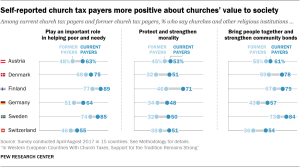
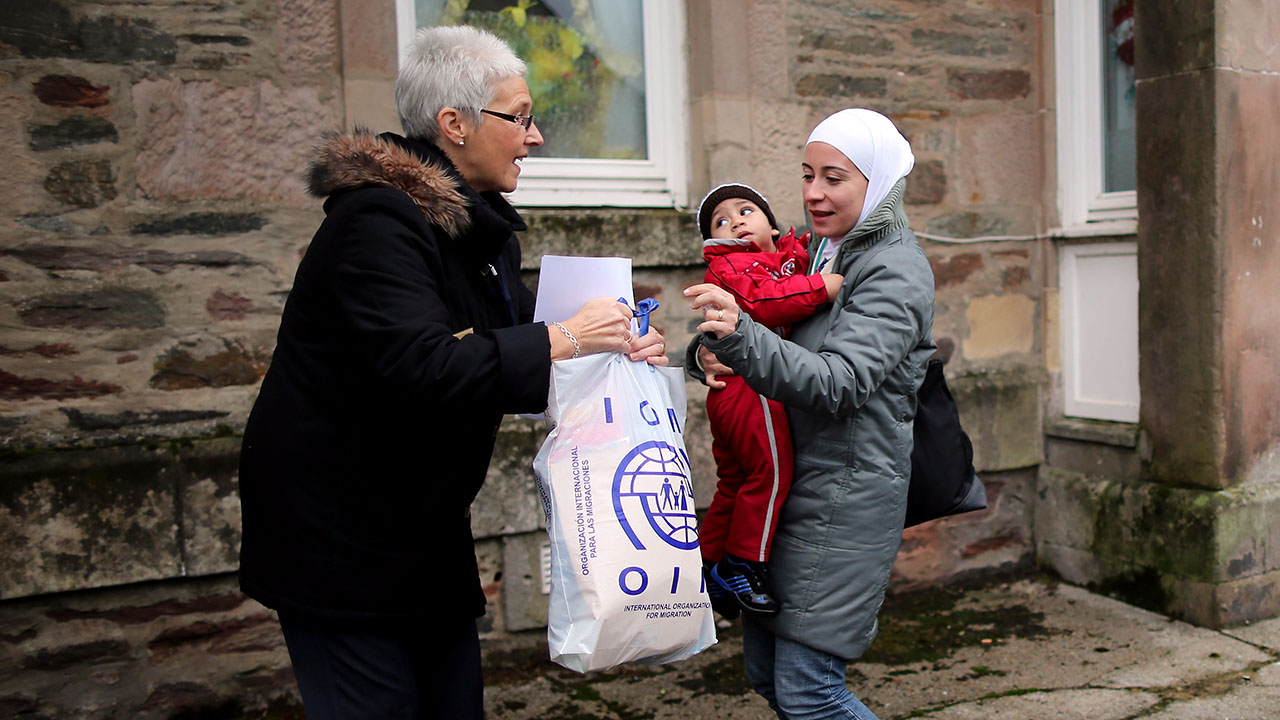
Canada resettled more refugees than the United States in 2018, the first time the U.S. did not lead the world on this measure since the adoption of the Refugee Act in 1980, according to a Pew Research Center analysis of new data from the United Nations High Commissioner for Refugees (UNHCR).
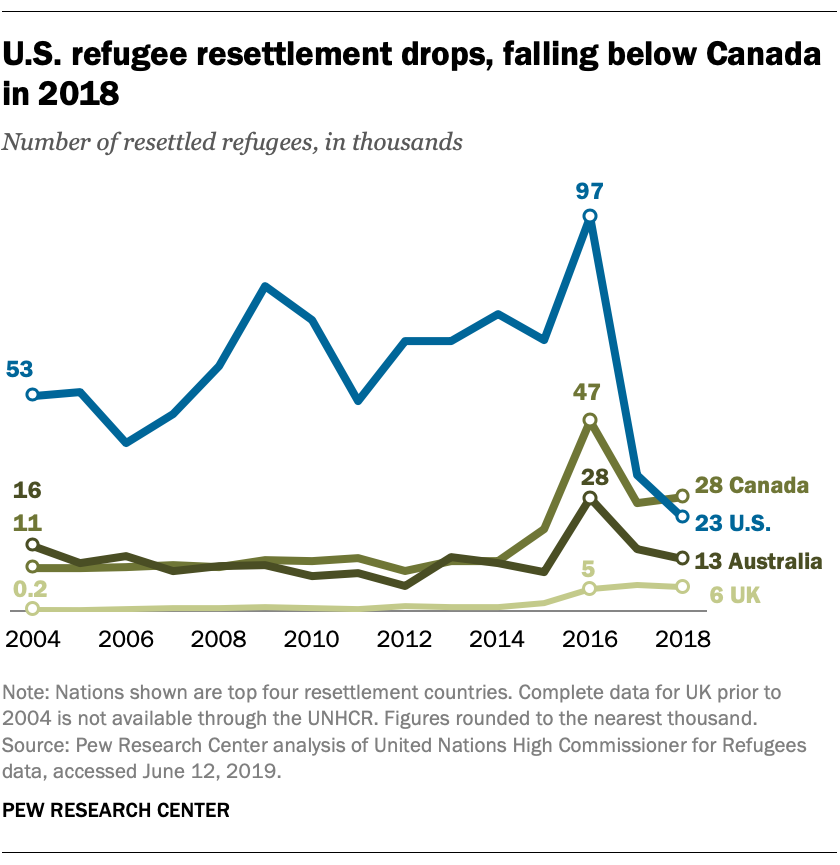
Canada resettled 28,000 refugees last year, similar to its total in 2017. Meanwhile, the U.S. resettled 23,000, down from 33,000 the previous year – and a recent high of 97,000 in 2016. Several other leading countries for refugee resettlement, including Australia and the United Kingdom, also saw declines last year.
Globally, 92,000 refugees were resettled in 2018, down from 103,000 in 2017 and a peak of 189,000 in 2016. The decrease occurred despite an increase in the world’s total refugee population in 2018, when it reached a record 20.4 million, according to UNHCR.
The sharp drop in U.S. refugee resettlement is in part due to the Trump administration’s decision to set a considerably lower cap on the number of refugees allowed into the U.S. than in previous years. In the U.S., the number of refugees admitted for resettlement is set by the president.
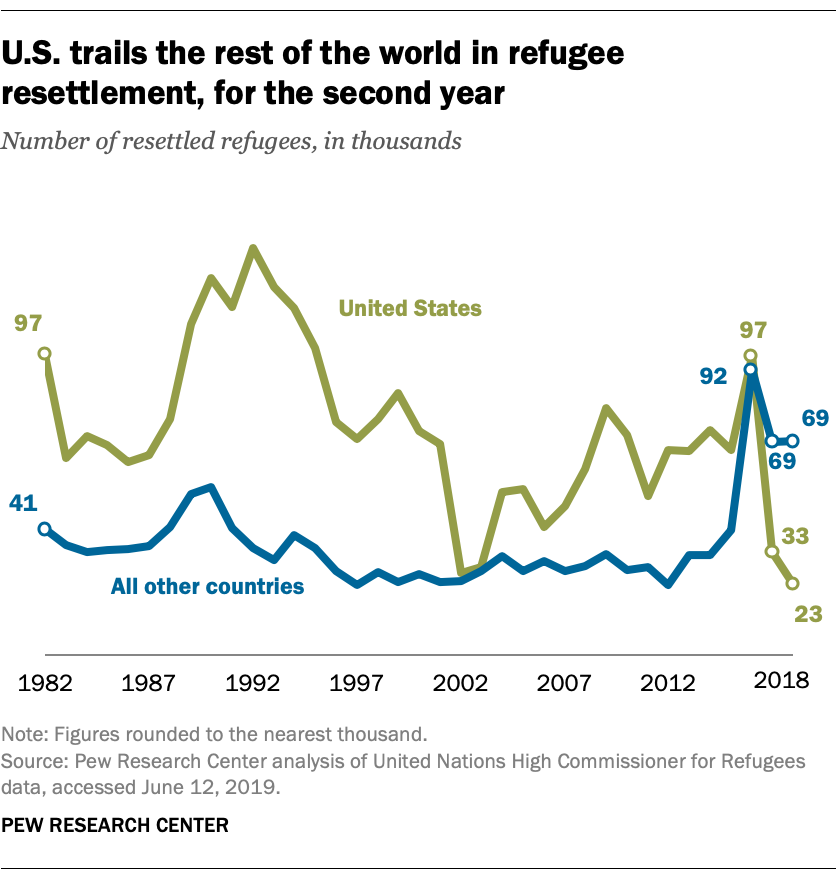
Until 2017, the U.S. resettled more refugees each year than the rest of the world’s countries combined. Since 1980, the U.S. has resettled millions more refugees than other countries – a total of about 3 million. The next two countries, Canada (658,000) and Australia (486,000), have resettled fewer than a million each over the same period.
Refugee resettlement numbers per capita also differ across countries. The U.S. resettled about 70 refugees for every million of its own residents in 2018, lower than the rate in many other nations. Canada led the world on this measure by resettling 756 refugees per million residents. Australia (510), Sweden (493) and Norway (465) also had much higher resettlement figures per million than the U.S.
Resettled refugees do not enter their destination country until they have legal permission to do so, because they apply for refugee status while in another country. Refugees are referred by UNHCR and other nongovernmental organizations. The refugee approval process for the U.S. can take several months or years while security checks on prospective refugees are completed. Resettled refugees differ from those seeking asylum; asylum seekers are people who migrate and cross a border without first having received legal permission to enter their destination country.
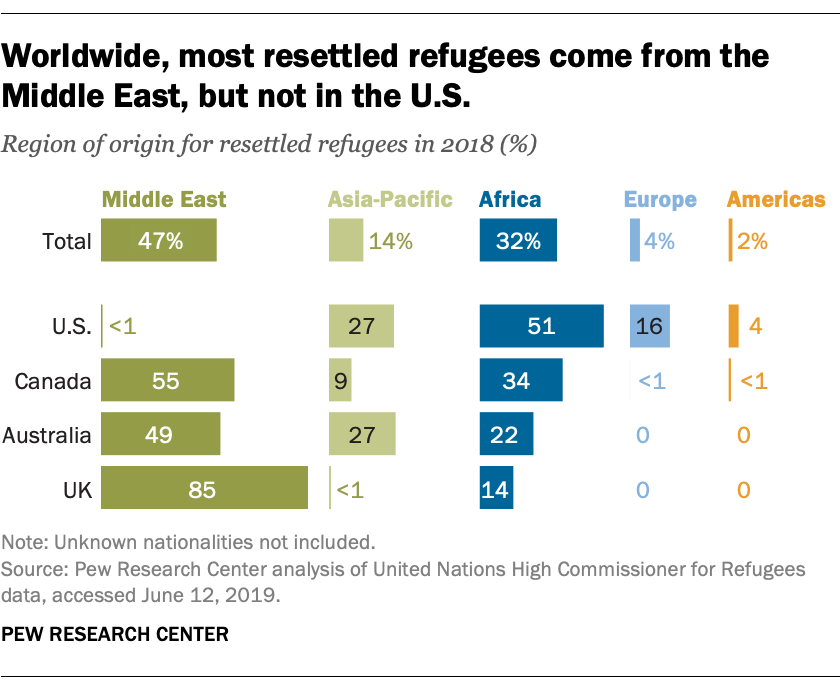
In 2018, nearly half (47%) of the world’s resettled refugees were from Middle Eastern countries, while almost one-third (32%) were from Africa. People from Middle Eastern countries – mostly Syria and Iraq – accounted for 49% of resettled refugees in Australia, 55% in Canada and 85% in the UK. By contrast, fewer than 1% of refugees resettled in the U.S. in 2018 were from the Middle East, in part due to shifting regional caps. Most resettled refugees in the U.S. were from countries in Africa (51%) or Asia (27%).
Correction: This post has been updated to include the correct share of global resettled refugees from Middle Eastern countries in 2018.
Note: See details on our regional grouping of countries here.

